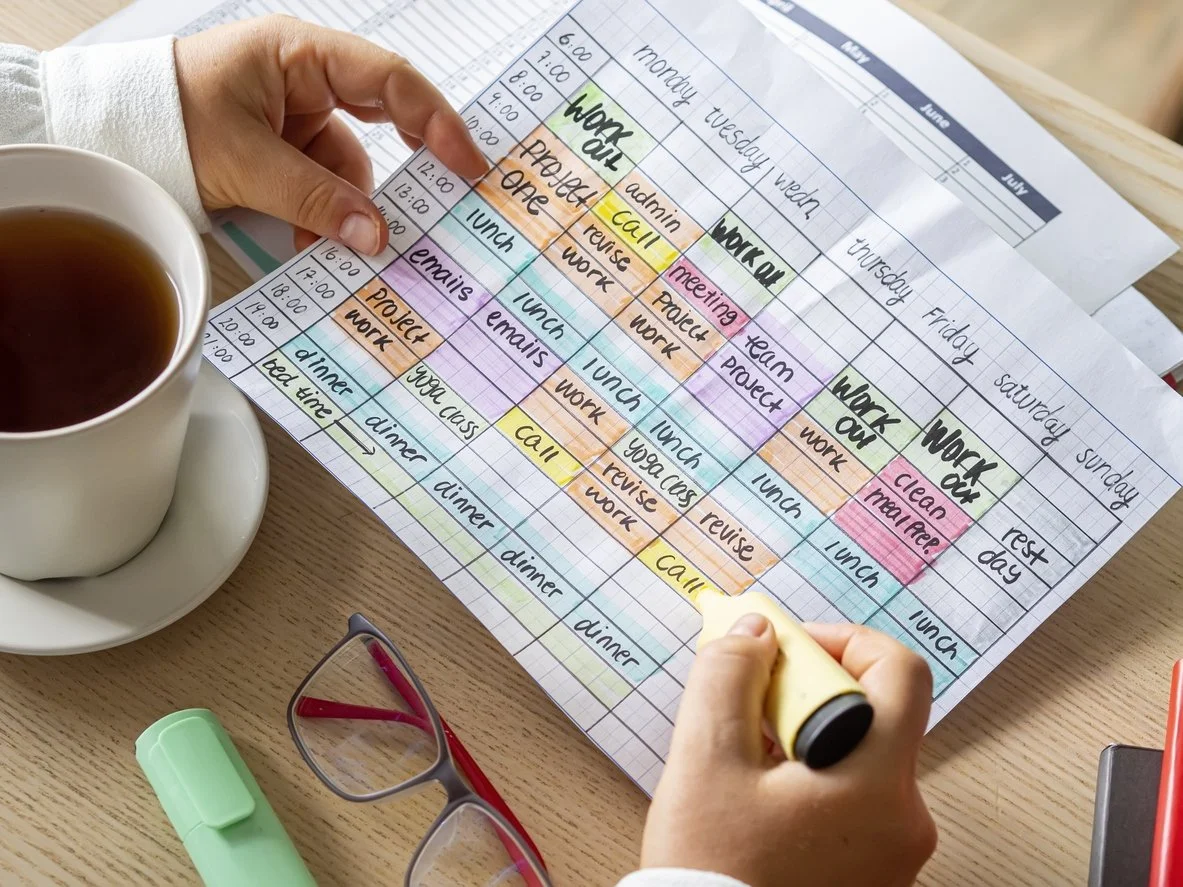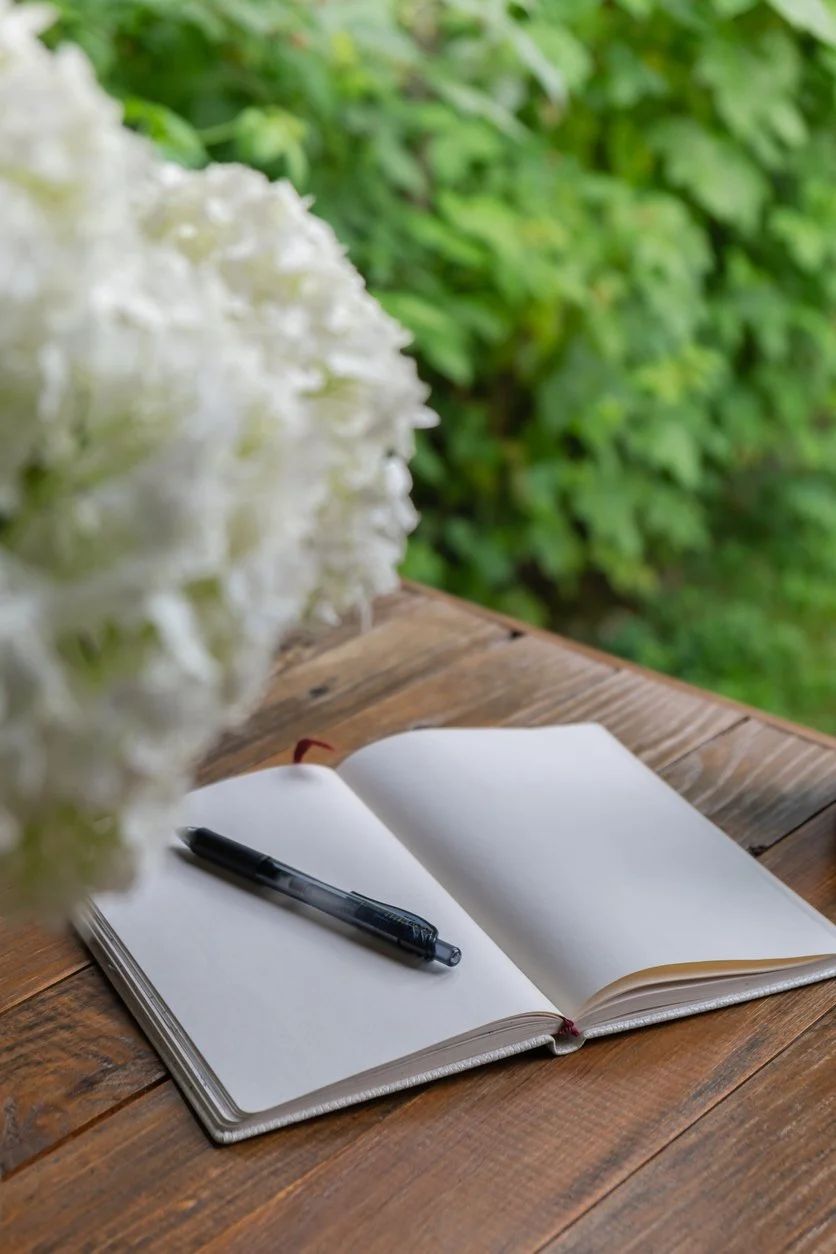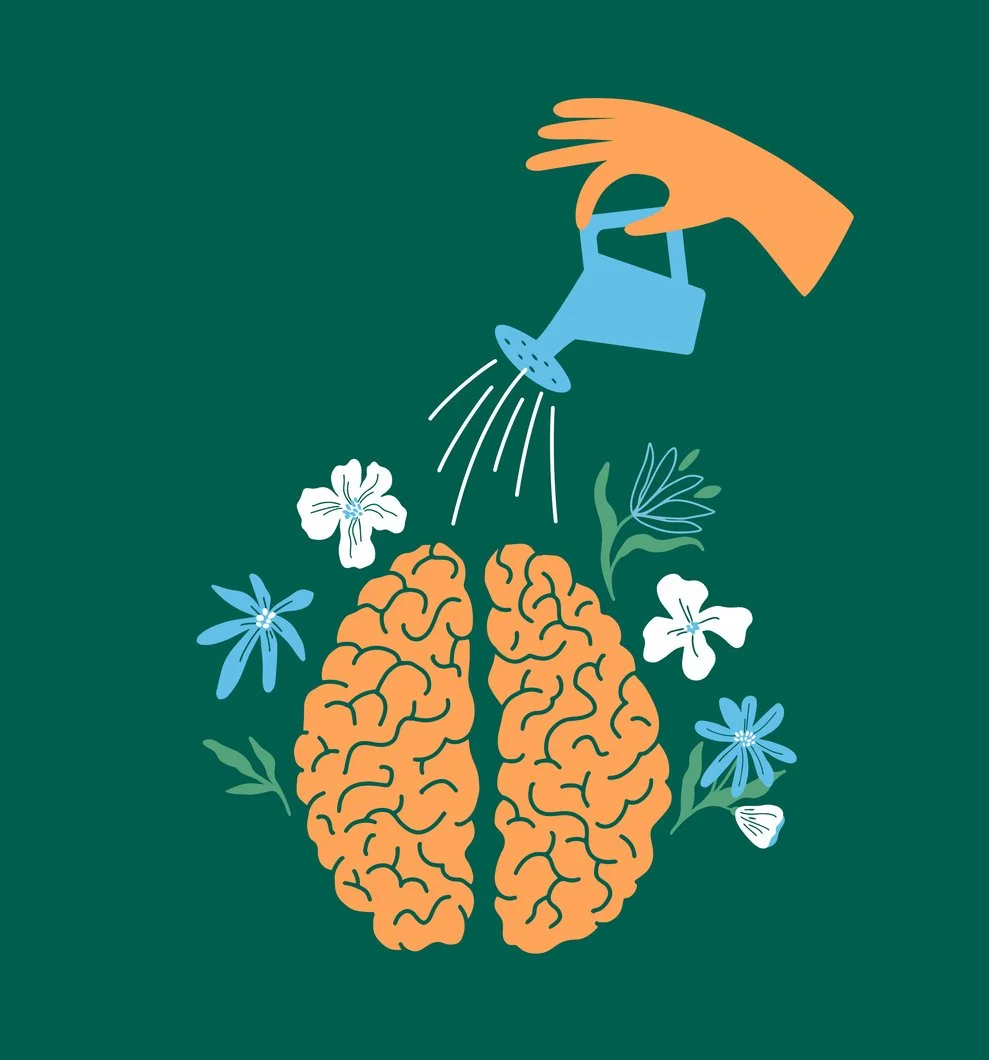Managing Creative Burnout
To manage creative burnout effectively, you'll need a multi-faceted approach combining preventive measures and active recovery strategies. Start by recognizing early warning signs like persistent fatigue and sudden disinterest in projects. Establish clear work boundaries, schedule regular breaks throughout your day, and maintain a dedicated relaxation space. Focus on essential self-care: 7-8 hours of sleep, regular exercise, and proper nutrition. Building sustainable routines and implementing team support systems will help you discover long-term solutions for creative energy.
Article Main Points
Set clear boundaries between work and personal life, maintaining regular hours and creating dedicated spaces for relaxation and creativity.
Take strategic breaks throughout the day, including three 10-minute pauses and outdoor time to prevent exhaustion and restore energy.
Prioritize physical well-being through consistent sleep, proper nutrition, exercise, and mindfulness practices like meditation or journaling.
Explore new creative mediums and activities outside your primary discipline to maintain inspiration and prevent creative stagnation.
Build strong support systems within teams, implement regular check-ins, and share responsibilities to prevent individual burnout.
Understanding the Creative Burnout Crisis
While creative work can be deeply fulfilling, the escalating crisis of creative burnout has become impossible to ignore.
You're not alone if you're feeling overwhelmed - the statistics paint a stark picture of the creative industry's struggle. Recognizing that physical and emotional exhaustion commonly manifests as anxiety and fatigue can help identify early warning signs. Many creatives find themselves seeking distractions rather than engaging with their work. A staggering 73% of content creators and 66% of artists report experiencing burnout, with the marketing sector showing similarly concerning numbers. Creative professionals are twice as dissatisfied with their daily tasks compared to other employees.
Your creative workload is likely taking a toll on your emotional resilience, especially if you're among the many who find it difficult to separate personal and professional creativity. Recent trends indicate that work-life separation is becoming increasingly challenging for those in creative roles. The majority of artists work outside jobs to sustain their creative practices.
The challenges are real: constant pressure to produce fresh content, increased screen time, and financial strain (72% of artists spend more than they earn).
When combined with inadequate workplace support and operational bottlenecks, it's clear why creative professionals are experiencing unprecedented levels of exhaustion and cynicism.
Recognizing Early Warning Signs
As your creative drive begins to wane, identifying the early warning signs of burnout becomes essential for preventing a full-blown crisis.
You'll notice patterns like sudden disinterest in projects that once excited you, persistent fatigue despite adequate rest, and increased irritability over minor setbacks.
Start recognizing patterns in your physical and emotional responses.
Watch for:
Unexplained headaches and muscle tension
Declining work performance
Growing cynicism toward your craft
Persistent self-doubt and imposter syndrome
The Hidden Toll on Creative Professionals
Behind the glossy facade of creative careers lies a startling reality that many professionals face in silence.
You'll find that creative fatigue affects up to 73% of content creators, with hidden impacts extending far beyond mere exhaustion. When you're constantly pushing the boundaries of innovation while juggling multiple platforms and shifting trends, you're at risk of severe burnout.
The toll isn't just personal - it's financial too. You're looking at significant organizational costs, with turnover rates hitting 30% in creative agencies.
That's not counting the productivity loss and declining performance that comes with burnout. Whether you're managing digital platforms, creating content, or leading creative teams, you'll need to recognize that the pressure to stay relevant and innovative can create a cycle of stress that's tough to break.
Breaking the Cycle of Exhaustion
You'll find that setting clear boundaries around your daily energy expenditure is essential to breaking free from creative exhaustion.
By tracking when you're most productive and structuring your work around these peak energy periods, you can establish a sustainable rhythm that prevents burnout before it starts.
Taking intentional breaks throughout your day, whether it's a 10-minute walk or a quick meditation session, helps you maintain the creative stamina needed for long-term success.
Rest and Renew Daily
Breaking the cycle of creative exhaustion begins with understanding that rest isn't just a luxury - it's a fundamental necessity for sustainable creativity.
By incorporating strategic breaks and Mindful Moments throughout your day, you'll boost your creative potential while protecting your mental energy.
Creative Retreats, whether brief or extended, can spark fresh perspectives and reignite your innovative spirit.
To maximize your daily renewal:
Schedule three 10-minute breaks to step outside, breathe deeply, and disconnect from work
Create a dedicated space for midday meditation or power naps
Set firm boundaries between work and rest periods, treating them as non-negotiable appointments with yourself
Set Your Energy Limits
While daily rest helps recharge your creative batteries, establishing firm energy limits creates a sustainable foundation for your creative practice.
Start developing energy awareness by tracking when you're most productive and where you tend to deplete your reserves.
To set clear boundaries and protect your creative energy:
Establish non-negotiable office hours and stick to them
Turn off work notifications after hours
Create a dedicated workspace that you can "leave" at day's end
Schedule challenging tasks during your peak energy windows
Build buffer time between projects for mental recovery
Remember: you're in charge of your energy management.
When you honor your limits, you'll find yourself maintaining consistent creative output without sacrificing your well-being.
Think of your creative energy as a valuable resource that requires strategic allocation.
Building a Sustainable Creative Practice
Creating an environmentally conscious creative practice isn't just good for the planet - it's essential for building a sustainable future in the arts.
By adopting eco-friendly practices and embracing mindful consumption, you'll position yourself as a forward-thinking creator while reducing your environmental impact.
Transform your workspace into a green sanctuary by maximizing natural light, installing energy-efficient bulbs, and setting up dedicated recycling stations.
Choose sustainable materials that align with your values - opt for recycled paper, biodegradable paints, and natural fibers.
Leverage technology to minimize waste by exploring digital art tools, virtual collaborations, and eco-conscious printing methods.
Your creative decisions have power.
When you implement sustainable practices, you're not just protecting the environment - you're inspiring other artists to follow your lead and creating lasting change in the industry.
Essential Self-Care Strategies for Creatives
For creative professionals who consistently push their artistic boundaries, a robust self-care routine isn't just a luxury - it's an essential foundation for sustainable success. Implementing powerful self-care rituals can transform your creative practice and prevent burnout before it takes hold.
Start by mastering the physical basics: prioritize 7-8 hours of sleep, maintain regular exercise, and fuel your body with proper nutrition.
Then, elevate your creative rejuvenation through mindfulness practices like meditation or journaling. You'll want to create clear boundaries between your workspace and relaxation areas, ensuring you're fully present in both modes.
Remember: your creative output is directly linked to your well-being.
Take control of your environment by decluttering your workspace, scheduling regular outdoor time, and engaging in hobbies that spark joy without pressure.
Creating Healthy Work Boundaries
Building on a strong self-care foundation, your next power move is establishing rock-solid work boundaries. Through effective boundary setting and communication strategies, you'll take control of your creative energy and prevent burnout.
When you're clear about your limits, you're positioned to deliver your best work consistently.
Here are three non-negotiable boundaries to implement today:
Time Blocking: Schedule dedicated creative hours and defend them fiercely - no interruptions allowed.
Communication Windows: Set specific times for checking emails and messages, avoiding the constant ping of notifications.
Meeting Limits: Cap your daily meeting time to protect your creative flow and energy reserves.
Revitalizing Your Creative Energy
When your creative well runs dry, revitalization becomes essential for rekindling your artistic spark and professional momentum. Through strategic rejuvenation techniques, you'll regain control of your creative energy and output.
Start by implementing these powerful restoration practices:
Schedule regular sauna sessions and red light therapy
Design a structured sleep routine
Engage in mindful movement or gentle exercise
Creative exploration is your pathway to renewed vigor. Try these energy-boosting activities:
Launch a podcast or create infographics
Visit art galleries for fresh inspiration
Experiment with new artistic mediums
Remember to protect your creative reserves by:
Setting firm boundaries
Practicing daily meditation
Creating blissful creative rituals that align with your goals
This balanced approach guarantees sustainable creative output while maintaining your artistic edge.
Team Support and Collaborative Solutions
Team collaboration serves as a powerful shield against creative burnout, especially since shared responsibilities can lighten individual mental loads.
When you're working with others, you'll find that peer accountability naturally develops, helping everyone stay motivated and focused on shared goals.
Set Clear Expectations: You'll want to establish defined roles and responsibilities within your team, making it easier to distribute workload effectively and prevent any single person from becoming overwhelmed.
Foster Open Communication: Create an environment where your team feels empowered to voice concerns about workload or stress levels.
Implement Regular Check-ins: Schedule consistent team meetings to assess progress, redistribute tasks when necessary, and guarantee everyone's creative energy stays balanced.
Long-Term Prevention Techniques
To prevent creative burnout in the long term, you'll need to establish sustainable daily routines that balance focused work periods with regular breaks and mindful activities.
Creating strong support systems, both within your team and through professional networks, can help you navigate challenges before they become overwhelming.
You can further protect yourself from burnout by investing in personal growth through continuous learning, exploring new creative disciplines, and pursuing interests outside of work that energize and inspire you.
Build Sustainable Daily Routines
Building sustainable daily routines stands as the cornerstone of preventing creative burnout in the long term.
By establishing consistent creative rituals and dedicated time blocks, you'll maintain both productivity and mental freshness. The key is crafting a schedule that works with your natural energy cycles while protecting your creative bandwidth.
Set firm work boundaries: Block out specific hours for deep creative work, and stick to them religiously - even when deadlines loom.
Create energizing breaks: Schedule rejuvenating activities between intense work sessions, like quick walks or meditation.
Maintain regular hours: Resist the temptation to work overtime, ensuring you're fresh for tomorrow's creative challenges.
Create Support Systems
Successful creative professionals understand that preventing burnout requires more than individual effort - it demands robust support systems designed for the long haul.
To strengthen your team dynamics and boost creative resilience, establish regular check-ins that foster psychological safety and open communication. You'll find that implementing flexible work arrangements, like remote options and compressed workweeks, helps your team maintain a healthier work-life balance.
Don't underestimate the power of organized creative retreats and workshops to rejuvenate your team's spirit. These opportunities for collaboration outside the usual workspace can spark fresh ideas and strengthen bonds.
Create a culture that celebrates play and exploration by encouraging creative workshops and passion projects during downtime - you're not just preventing burnout, you're building a sustainable creative ecosystem that thrives on mutual support.
Invest in Personal Growth
While personal growth might seem like a long-term investment, it's actually your daily shield against creative burnout.
Personal development isn't just about attending workshops - it's about building a fortress of habits that protect your creative energy and amplify your potential.
Here are three power moves for skill enhancement that'll transform your creative journey:
Master meditation and mindfulness to sharpen your focus and boost creative thinking.
Tackle new skills outside your comfort zone - whether it's photography or coding - to stimulate fresh neural pathways.
Schedule regular creative exploration time at museums, parks, or art galleries to fuel your imagination.
Frequently Asked Questions
-
You'll find recovery timelines vary considerably based on your personal situation. Implementing effective recovery techniques can speed healing, but expect weeks to months of dedicated work to fully restore your creative power and energy.
-
Powerfully persistent people prevail! No, creative burnout won't permanently damage your artistic abilities. Your creative potential remains intact, and with proper recovery strategies, you'll find your artistic resilience grows even stronger through the experience.
-
Before switching careers, try revitalizing your passion projects and setting boundaries. If you're still experiencing burnout despite changes, a career switch can lead to greater career satisfaction and renewed creative energy.
-
Yes, you're more vulnerable to creative burnout if you're an introverted artist or have perfectionist tendencies. Your heightened sensitivity and drive for excellence can drain your creative energy faster than others with different personality types.
-
Like an engine running on empty, your creative process needs proper fuel. When communicating with clients, explain that burnout drains innovation and quality. You'll get better results by respecting recovery time.
















